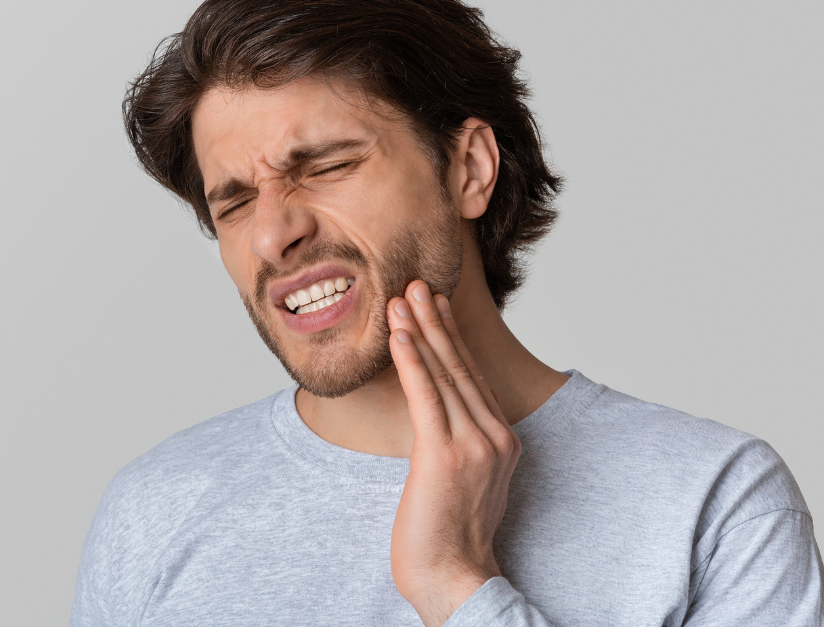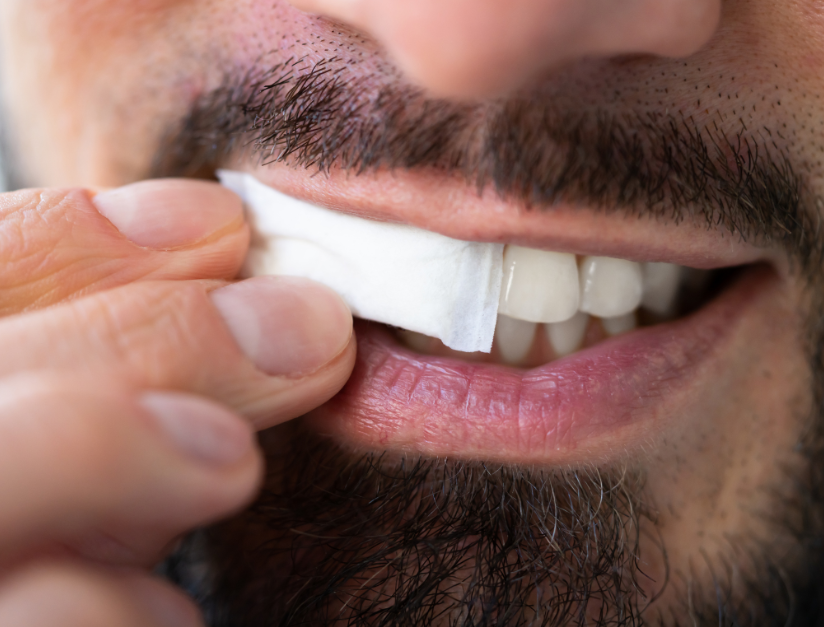What Is Chewing Tobacco?
Chewing tobacco, also known as smokeless tobacco, includes products like gutkha, paan, khaini, and zarda. These are placed inside the cheek and chewed to release nicotine. Many believe this is a safer alternative to smoking, but it has dangerous effects—especially on your teeth and gums.
Immediate Effects on Your Mouth
1. More Saliva, More Trouble
Chewing tobacco increases saliva production, which mixes with harmful chemicals. These chemicals remain in the mouth longer and damage soft tissues and teeth.
2. Tiny Cuts in the Mouth
The rough texture of tobacco products often causes micro-cuts in the gums and cheeks. These can get infected easily, leading to mouth sores and ulcers.

Long-Term Dental Problems from Tobacco
1. Yellow Teeth & Enamel Damage
Tobacco stains your teeth quickly, turning them yellow or even brown. It also wears down enamel—the protective outer layer of your teeth—leading to sensitivity and cavities.
2. Gum Recession & Infections
Tobacco causes the gums to pull back from the teeth, exposing roots. This creates pockets where bacteria grow, leading to bad breath and gum disease (periodontitis).
3. Risk of Oral Cancer
One of the most dangerous effects is oral cancer. Prolonged tobacco use leads to white or red patches in the mouth (leukoplakia or erythroplakia), which can become cancerous if left untreated.
4. Persistent Bad Breath
Tobacco dries out the mouth, which reduces saliva—a natural cleaner for your teeth. This causes long-lasting bad breath and a bitter taste.
How It Affects Overall Health
The damage doesn’t stop at your mouth. Chewing tobacco has been linked to:
- Heart disease
- High blood pressure
- Esophageal cancer
- Weakened immune system
Treatments Offered at Royal Oral & Dental Clinic
Routine Cleanings & Dental Checkups
We remove plaque and tartar buildup and track early signs of gum disease.
Gum Disease Treatment
We offer advanced periodontal treatments like deep cleaning (scaling and root planing), gum surgery, and regeneration therapy.
Teeth Whitening & Cosmetic Solutions
We provide safe whitening procedures for stained teeth and offer bonding or veneers for severely damaged enamel.
Oral Cancer Screening
Our clinic checks for early signs of oral cancer through clinical examinations and further diagnostic tests if needed.

Prevention & Tips to Quit Chewing Tobacco
1. Quitting Methods
- Use nicotine replacement products like gum or patches.
- Get support through counseling or tobacco cessation programs.
- Talk to your dentist or doctor about medication options.
2. Improve Oral Hygiene
- Brush twice a day with fluoride toothpaste.
- Floss daily to remove trapped food particles.
- Use a non-alcoholic mouthwash for gum health.
3. Regular Dental Visits
Visit your dentist every 6 months to monitor oral health, especially if you have a history of tobacco use.
Why Choose Royal Oral & Dental Clinic?
- Skilled dentists with years of experience in treating tobacco-related damage.
- Personalized treatment plans based on your condition.
- Modern equipment for accurate diagnosis and comfortable care.
- Focus on both prevention and restoration.
FAQs
Q1. Can quitting tobacco reverse the damage?
Some symptoms like bad breath and minor gum issues may improve, but enamel and receded gums cannot regrow naturally. Dental treatment is required.
Q2. Are there natural remedies to treat tobacco stains?
At-home remedies like baking soda can help slightly, but professional cleaning and whitening are far more effective and safer.
Q3. How often should I see a dentist after quitting tobacco?
Every 3–6 months is ideal to monitor healing, spot early signs of complications, and maintain overall oral health.
Call to Action
Your smile is worth saving.
If you or a loved one uses chewing tobacco, it’s time to take your oral health seriously. Visit Royal Oral & Dental Clinic for expert advice and personalized treatment.
📞 Call now or Book an Appointment to start your journey towards a healthier smile.

